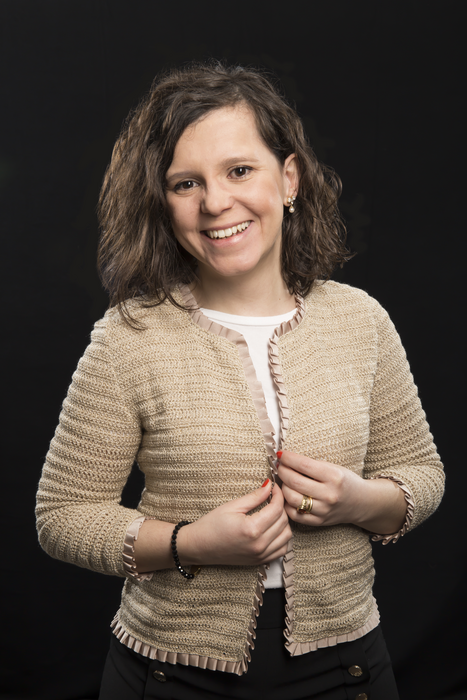East Hanover, NJ – July 11, 2022 – Silvana Costa, PhD, of Kessler Foundation received a two-year $199,800 grant from the New Jersey Commission on Spinal Cord Research. Her study examines the feasibility of using eye movements as a biomarker of cognitive dysfunction in persons with acute traumatic spinal cord injury (tSCI) with concomitant traumatic brain injury (TBI), termed dual diagnosis. Dr. Costa, a research scientist in the Center for Neuropsychology and Neuroscience Research, is lead on the study titled, “Using eye movements as a biomarker of dual-diagnosis in acute spinal cord injury: a proof-of-concept study.”

Credit: Kessler Foundation
East Hanover, NJ – July 11, 2022 – Silvana Costa, PhD, of Kessler Foundation received a two-year $199,800 grant from the New Jersey Commission on Spinal Cord Research. Her study examines the feasibility of using eye movements as a biomarker of cognitive dysfunction in persons with acute traumatic spinal cord injury (tSCI) with concomitant traumatic brain injury (TBI), termed dual diagnosis. Dr. Costa, a research scientist in the Center for Neuropsychology and Neuroscience Research, is lead on the study titled, “Using eye movements as a biomarker of dual-diagnosis in acute spinal cord injury: a proof-of-concept study.”
A dual diagnosis of tSCI and TBI (tSCI-TBI) occurs when individuals have specific clinical and diagnostic features of both disorders resulting from trauma. “At this time, there is limited understanding of the effects of co-occurring tSCI and TBI, though dual diagnosis is estimated to affect between 25% to 60% of the tSCI population,” said Dr. Costa.
Diagnosis of tSCI-TBI is frequently performed retrospectively by examining acute care medical records and studies have shown that individuals with tSCI-TBI show poorer outcome following rehabilitation with decreased quality of life. “Emergency medical services and/or acute care medical records often do not contain the basic information necessary to diagnose the presence and severity of TBI, especially in the presence of life-threatening issues often caused by spinal trauma,” Dr. Costa explained. “Accurately identifying tSCI-TBI is therefore one of the biggest challenges clinicians and researchers face when examining cognitive functions and treating individuals with tSCI,” she added.
While tSCI is defined primarily by motor and sensory impairments, an increased number of research studies have shown that cognitive impairments (the ability to perform complex operations such as reading and understanding a book) are frequent in both acute and chronic tSCI. Specifically, it is estimated that as many as 60% of individuals with tSCI display some degree of cognitive impairment. There are approximately 17,500 new traumatic spinal cord injuries (tSCI) each year, with roughly 285,000 persons living with tSCI in the U.S. alone.
Dr. Costa’s research encompasses two subgroups of individuals with acute tSCI: (1) tSCI (no history of TBI at the time of the traumatic event) (2) tSCI with moderate-to-severe TBI. In both cases, a group of able-bodied individuals will serve as a comparator sample (participants without tSCI).
Kessler Foundation is actively recruiting volunteers for this research study and other disabling SCI conditions. Find out more at https://kesslerfoundation.org/research/studies/spinal-cord-injury.
Funding: This research is funded by the New Jersey Commission on Spinal Cord Research under award # CSCR22ERG009.
About New Jersey Commission on Spinal Cord Research
The Commission’s mission is to ensure that the people of New Jersey receive the utmost attention and benefit in our nation’s fight against spinal cord injury and disease through its promotion of research into the treatment and cure. The Commission was created to encourage and promote significant, original research projects in New Jersey through the funding of approved projects at qualifying research institutions in the state. In addition, the Commission will establish and maintain, in conjunction with the New Jersey Department of Health, a central registry of all persons who sustain spinal cord injuries. For more information, visit: https://www.state.nj.us/health/spinalcord/
About Kessler Foundation
Kessler Foundation, a major nonprofit organization in the field of disability, is a global leader in rehabilitation research that seeks to improve cognition, mobility, and long-term outcomes–including employment–for people with neurological disabilities caused by diseases and injuries of the brain and spinal cord. Kessler Foundation leads the nation in funding innovative programs that expand employment opportunities for people with disabilities. For more information on Kessler Foundation’s research, visit KesslerFoundation.org.
For more information, contact:
Deb Hauss, senior staff writer, 973.324.8372, [email protected]
Carolann Murphy, senior medical writer, [email protected]
Stay Connected with Kessler Foundation
Twitter | Facebook | YouTube | Instagram | iTunes & SoundCloud




